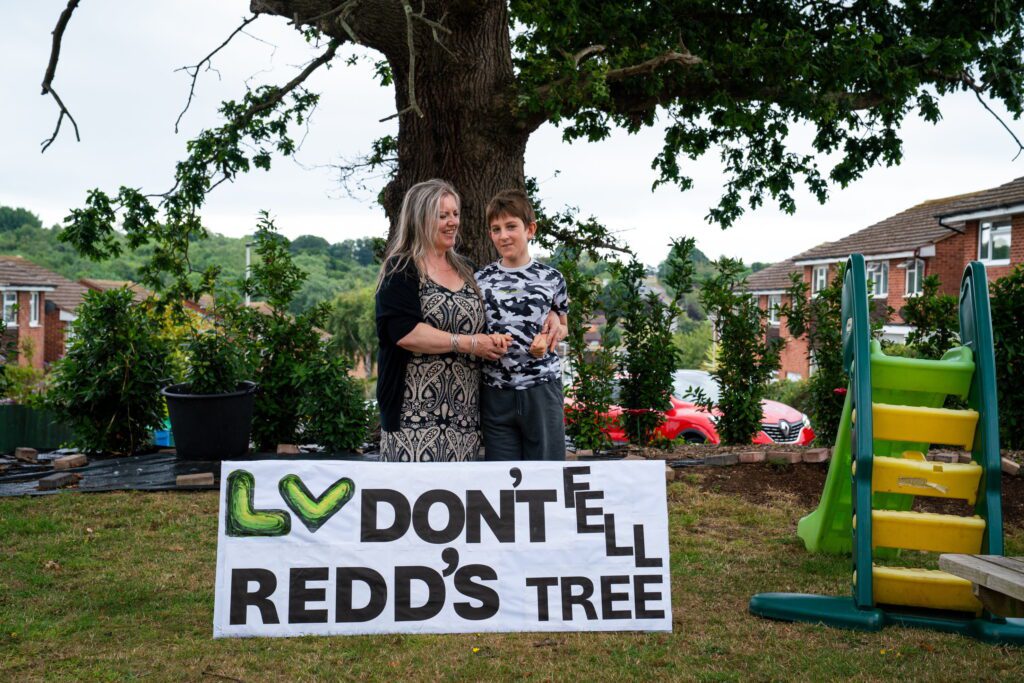A Family’s Fight to Save Their Son’s Tree
A family in Ireland is embroiled in a battle with an insurance company over the fate of a 200-year-old oak tree in their garden. The tree, which plays a vital role in the life of their son Redd, has become the center of a heated dispute that highlights the challenges faced by families with children who have complex medical needs.
Redd, an 11-year-old boy who is visually and hearing impaired, non-verbal, and suffers from epilepsy, relies heavily on the shade provided by the oak tree. His parents, Linda Taylor Cantrill and Scott, believe the tree is essential for his physical and mental well-being. They argue that the tree offers protection from the sun, which is crucial for Redd, who also has a vitamin D deficiency and struggles with ARFID (avoidant/restrictive food intake disorder).
The family’s fight began when they made an insurance claim for subsidence at their home. Following this, the insurance company, LV= General Insurance, owned by Allianz, requested the removal of more than 20 trees from their back garden. Now, they are asking the family to remove the oak tree at the front of their property, claiming it is linked to the subsidence.
Linda, who worked as an engineer before becoming a full-time carer for Redd, says the tree was a key factor in their decision to purchase the property. She described the emotional toll of losing so many trees and the frustration of being blindsided by the new request to remove the oak.
“We had to remove 17 conifers, a big holly tree, a beautiful lilac tree, fuchsias – they even told us to remove the rosemary bush! They stripped it all out so we could save this tree, and behind our backs they put in this application. It has been a three-year battle – and it’s horrendous.”
The family claims that the reports and documents submitted by the insurance company contain inaccuracies and misleading information. Linda insists that no evidence has been presented to prove that the tree is the cause of the subsidence. She also points out that no other investigations have been conducted.
The oak tree has a preservation order, which means it cannot be removed without special permission. However, recent changes in the law have made it more difficult for councils to reject applications to fell such trees. This has left the family in a difficult position, as they feel the tree is too important to lose.
In July 2022, a neighbor noticed a crack in the family’s home, which Scott, a building surveyor, believed was caused by subsidence. The family made a claim to LV=, and an arborist from Property Risk Inspection (PRI) assessed the property and concluded that the oak tree was responsible for the damage.
Linda says the insurance company’s reports are filled with “mislabeled samples and inaccurate information.” She also claims that no structural engineer has supported the removal of the tree.
Despite the family’s efforts, the insurance company maintains that the tree is the cause of the subsidence. A spokesperson for Allianz stated that investigations revealed desiccated clay soils with “roots found originating from an oak tree.” They also mentioned that drains were inspected in 2023 and found to have root damage, which was subsequently repaired.
The spokesperson added that while removing the tree is considered the best long-term option, the company is exploring alternative solutions. However, they emphasized that some options may not be viable or require ongoing maintenance.
Linda disputes this, arguing that without a Deep Fixed Datum Point for the past three years worth of subsidence measurements, the five millimeter downward movement measured is not reliable. She believes the cracks in their home are wider than this figure, indicating a more serious issue.
The family has organized a demonstration at their home to raise awareness of their plight and has reached out to their local MP for support. They are also seeking public support through a Change.org petition to save Redd’s tree.
As the battle continues, the family remains determined to protect the tree that has become a vital part of their son’s life. Their story highlights the complex intersection of health, environment, and insurance policies, and the challenges faced by families in similar situations.







